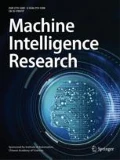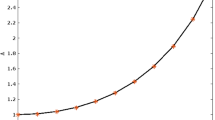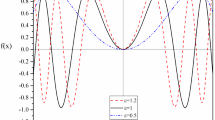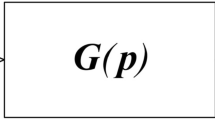Abstract
The frequency domain analysis of systems is an important topic in control theory. Powerful graphical tools exist in classic control, such as the Nyquist plot, Bode plots, and Nichols chart. These methods have been widely used to evaluate the frequency domain behavior of system. A literature survey shows that various approaches are available for the computation of the frequency response of control systems under different types of parametric dependencies, such as affine, multi-linear, polynomial, etc. However, there is a lack of tools in the literature to construct the Bode envelopes for the general nonlinear type of parametric dependencies. In this paper, we address the problem of computation of the envelope of Bode frequency response of a non-rational transfer function with nonlinear parametric uncertainties varying over a box. We propose two techniques to compute the Bode envelopes: first, based on the natural interval extensions (NIE) combined with uniform subdivision and second, based on the existing Taylor model combined with subdivision strategy. We also propose the algorithms to further speed up both methods through extrapolation techniques.
Similar content being viewed by others
References
S. P. Bhattacharyya, H. Chapellat, L. H. Keel. Robust Control — The Parametric Approach, NewYork, USA: Prentice Hall, 1995.
I. M. Horowitz. Quantitative Feedback Design Theory (QFT), Boulder, Colorado, USA: QFT Publications, 1993.
N. Tan, D. P. Atherton. New approach to assessing the effects of parametric variations in feedback loops. Control Theory & Applications., vol. 150, no. 2, pp. 101–111, 2003.
J. Ackermann, A. Bartlett, D. Kaesbauer. Robust Control: Systems with Uncertain Physical Parameters, Berlin, Germany: Springer-Verlag, 1993.
B. R. Barmish. New Tools for Robustness of Linear Systems, New York, USA: Macmillan, pp. 361–381, 1994.
A. C. Bartlett. Computation of frequency response of systems with uncertain parameters: A simplification. International Journal of Control, vol. 57, no. 6, pp. 1293–1309, 1993.
A. C. Bartlett. Nyquist, Bode and Nichols plots of uncertain systems. In Proceedings of American Control Conference, IEEE, San Diego, CA, USA, pp. 2033–2037, 1990.
A. C. Bartlett, A. Tesi, A. Vicino. Frequency response of uncertain systems with interval plants. IEEE Transactions on Automatic Control, vol. 38, no. 6, pp. 929–933, 1993.
T. E. Djaferis. Robust Control Design: A Polynomial Approach, Boston, USA: Kluwer Academic Publishers, 1995.
M. Fu. Computing the frequency response of linear systems with parametric perturbations. Systems and Control Letters, vol. 15, no. 1, pp. 45–52, 1990.
L. Jaulin, M. Kieffer, O. Didrit, E. Walter. Applied Interval Analysis with Examples in Parameter and State Estimation, Robust Control and Robotics, London, UK: Springer, 2001.
P. S. V. Nataraj, J. J. Barve. Reliable computation of frequency response plots for non-rational transfer functions to prescribed accuracy. Reliable Computing, vol. 9, no. 5, pp. 373–389, 2003.
K. Makino, M. Berz. Taylor models and other validated functional inclusion methods. International Journal of Pure and Applied Mathematics, vol. 4, no. 4, pp. 379–456, 2003.
C. Brezinski, M. R. Zaglia. Extrapolation Methods: Theory and Practice, Amsterdam, Netherlands: North Holland, 2002.
A. Sidi. Practical Extrapolation Methods, Cambridge, UK: Cambridge University Press, 2002.
G. Walz. Asymptotics and Extrapolation, Berlin, Germany: Akademie Verlag, 1996.
J. Stoer, R. Bulirsch. Introduction to Numerical Analysis, 2nd ed., Berlin, Germany: Springer-Verlag, 1991.
P. S. V. Nataraj, S. Sondur. Experiments with range computations using extrapolation. Reliable Computing, vol. 13, no. 1, pp. 1–23, 2007.
S. Sondur. Application of Extrapolation Methods to Range Finding Algorithms and Global Optimization, Ph. D. dissertation, Systems and Control Engineering, Indian Institute of Technology Bombay, India, 2008.
H. Ratschek, J. Rokne. Computer Methods for the Range of Functions, Chichester, UK: Ellis Horwood, 1984.
R. E. Moore. Methods and Applications of Interval Analysis, Philadelphia, USA: SIAM, 1979.
R. E. Moore. Interval Analysis, Englewood Cliffs, NJ, USA: Prentice-Hall, 1966.
Q. Lin, J. G. Rokne. Interval approximations of higher order to the ranges of functions. Computers and Mathematics with Applications, vol. 31, no. 7, pp. 101–109, 1996.
K. Makino. Rigorous Analysis of Nonlinear Motion in Particle Accelerators, Ph.D. dissertation, Department of Physics and Astronomy, Michigan State University, East Lansing, USA, 1998.
K. Makino, M. Berz. Taylor models and other validated functional inclusion methods. International Journal of Pure and Applied Mathematics, vol. 4, no. 4, pp. 379–456, 2003.
M. Berz, G. Hoffstätter. Computation and application of Taylor polynomials with interval remainder bounds. Reliable Computing, vol. 4, no. 1, pp. 83–97, 1998.
C. Brezinski. Error control in convergence acceleration processes. IMA Journal of Numerical Analysis, vol. 3, no. 1, pp. 65–80, 1983.
H. Ratschek, J. Rokne. New Computer Methods for Global Optimization, New York, USA: Wiley, 1988.
M. Berz. COSY Infinity Manual and Introduction, [Online], Available: http://cosy.pa.msu.edu/index.htm.
W. Chen, D. J. Ballance. Plant template generation for uncertain plants in QFT. Journal of Dynamic Systems, Measurement and Control, vol. 121, no. 3, pp. 358–364, 1999.
R. B. Kearfott. Rigorous Global Search: Continuous Problems, Dordrecht, Holland: Kluwer Academic Publishers, 1996.
Author information
Authors and Affiliations
Corresponding author
Additional information
P. S. V. Nataraj received the Ph.D. degree from IIT Madras, India in process dynamics and control in 1987. He then worked in the CAD center at IIT Bombay, India for about one and half years before joining the Faculty of the Systems and Control Engineering Group at IIT Bombay in 1988. He received an NASA/US Navy commendation and memento for the Best Applied Research Paper awarded at the International Symposium on Air Breathing Engines (ISOABE), Cleveland, Ohio, September 2003, and the “Best Paper of Session” award for the paper improved robust feedback synthesis for nonlinear integro-differential equations (NIDE) models in the IETE International Conference on Quality, Reliability, and Control, Mumbai, December 2001.
His research interests include robust stability and control especially using quantitative feedback theory (QFT) techniques, nonlinear system analysis and control, and reliable computing using interval analysis techniques.
Shanta Sondur received the B. Eng. degree in instrumentation engineering from the Marathawada University, India in 1989, M.Eng. degree in electronics and telecommunication engineering from Pune University, and Ph.D. degree in systems and controls, from Indian Institute of Technology, Bombay, India in 1997 and 2008, respectively. In 1994, she was a faculty member at Pune University. Currently, she is a professor at the Department of Information Technology at Mumbai University, India, and also a professor at the Department of Information Technology, Vivekanand Education Society’s Institute of Technology, Mumbai, India. She is a member of ISOI, ISA, and ISTE.
Her research interests include process control, automation, optimization, and iterative learning control.
Rights and permissions
About this article
Cite this article
Nataraj, P.S.V., Sondur, S. Construction of bode envelopes using REP based range finding algorithms. Int. J. Autom. Comput. 8, 112–121 (2011). https://doi.org/10.1007/s11633-010-0562-0
Received:
Revised:
Published:
Issue Date:
DOI: https://doi.org/10.1007/s11633-010-0562-0




